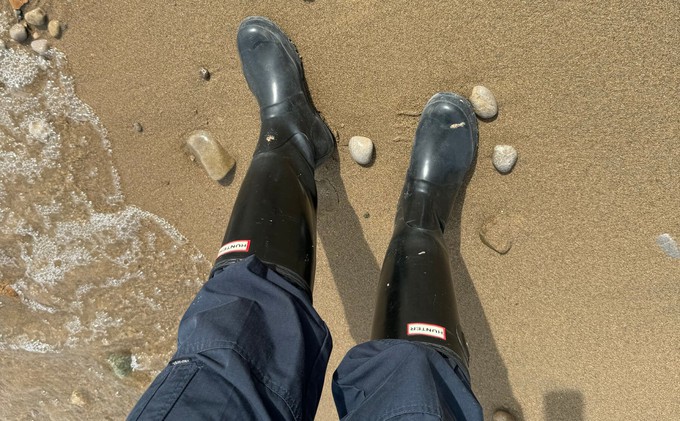If you’re trying to make more environmentally friendly clothing choices, I bet this wasn’t the first material that came to mind.
While it’s not as common as cotton or polyester, though, rubber is bound to be in your wardrobe. Think sandals, shoe soles, rainboots, accessories, details, and outerwear, to name a few.
But is rubber sustainable?
Here’s a simple breakdown of a… not-so-simple topic.
What is rubber actually made of?
There are two types of rubber: natural and synthetic.
- Natural rubber comes from the latex of rubber trees, extracted through a process called tapping and then processed
- Synthetic rubber is derived from petroleum by-products (so, fossil fuels) and manufactured using a chemical-heavy process
Honestly? Up until recently… I had no clue! Whenever I saw brands clarify that they used natural rubber, I thought they were stating the obvious.
Turns out, 70% of what’s marketed as rubber is synthetic. So, it’s basically plastic (except for the fact that rubber is elastic, of course).
Rubber and sustainability
“Surely, it’s an easy one. Synthetic rubber is bad and natural rubber is good, right?”
Unfortunately, things are rarely black and white when it comes to sustainable fashion, and this material is no exception.
So, here are the pros and cons of both natural rubber and synthetic rubber from an environmental and ethical perspective.
Natural rubber

Sustainable and ethical pros of natural rubber
- It comes from a renewable resource – No fossil fuels involved
- It’s biodegradable – While this can be impacted by how it’s processed, rubber biodegrades naturally
Cons of natural rubber
- Unsustainably sourced rubber contributes to deforestation – Rubber trees are native to South America, but 90% of natural rubber is now produced in Asia, especially in countries with fewer regulations. So, its intensive and unsupervised cultivation is a big cause of deforestation, which leads to habitat destruction and loss of biodiversity while contributing to climate change
- It often involves human right abuses – That lack of regulation impacts rubber workers too. Many are underpaid and forced to work in unsafe conditions, and child labour is common, too. On top of this, because it requires a lot of land, it often leads to conflicts with local communities who, as well as having their economy affected, are sometimes displaced
- It can involve bad chemicals – Pesticides and fertilisers are widely used in rubber cultivation. Plus, when this material is processed to enhance certain properties, it can include chemicals that compromise its biodegradability
Synthetic rubber

Sustainable and ethical pros of synthetic rubber
- It can be more durable – Synthetic rubber can be manufactured to have specific properties that make it better suited for different uses. So, by lasting longer, it reduces waste
- It doesn’t involve land use – This bypasses the whole problem of deforestation and how rubber cultivation can negatively impact local communities
Cons of synthetic rubber
- It comes from fossil fuels – As well as being non-renewable resources, they have a terrible environmental footprint
- It requires an energy-intensive production process – From using a lot of energy to releasing greenhouse gasses, this contributes to climate change even further
- It’s not biodegradable – Synthetic rubber can take up to 300 years to decompose, and while it does, it releases more chemicals and gases, continuing to pollute the environment
So, is rubber good or bad for the environment?
Rubber can be better or worse for the environment depending on what type of rubber it is and how it was made.
So, to choose greener rubber whenever possible, look for:
- Natural rubber that was harvested responsibly, taking care of both the environment and workers (ideally, with third-party certificates like one from the Forest Stewardship Council)
- Recycled rubber. While both natural and synthetic rubber are tricky to recycle, choosing a second-hand material reduces your environmental footprint because it bypasses the initial production process, which is the most problematic. It also prevents it from ending up in landfills straightaway
On Project Cece, we brought hundreds of fair trade fashion brands in one place to help you find ethical clothes and accessories easily.
This includes plenty of items with rubber. When checking their product descriptions, you’ll see exactly what makes them ethical and good for the planet.
Overall, calling all rubber sustainable would be a bit of a stretch (pun intended). When it’s produced in a way that safeguards both human workers and the planet, though, it can definitely be an eco-friendly material.


.png)